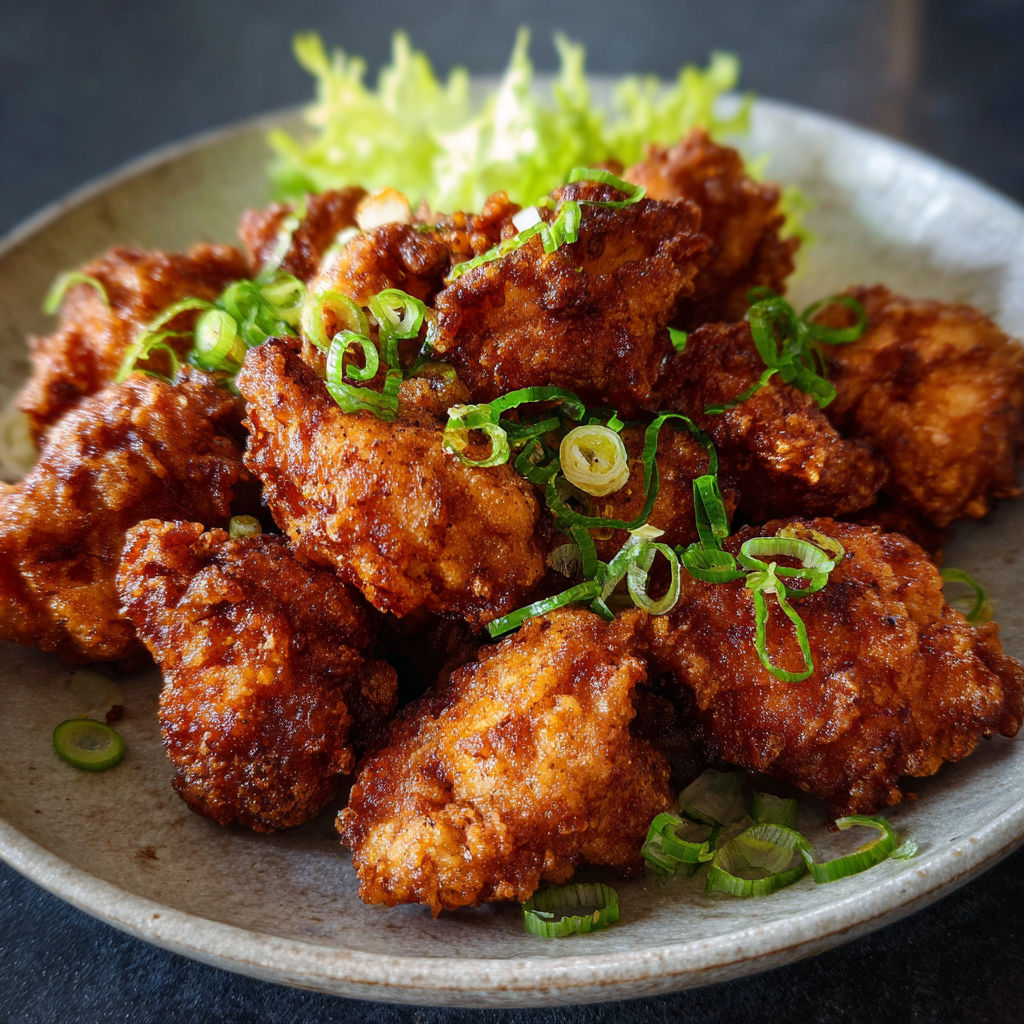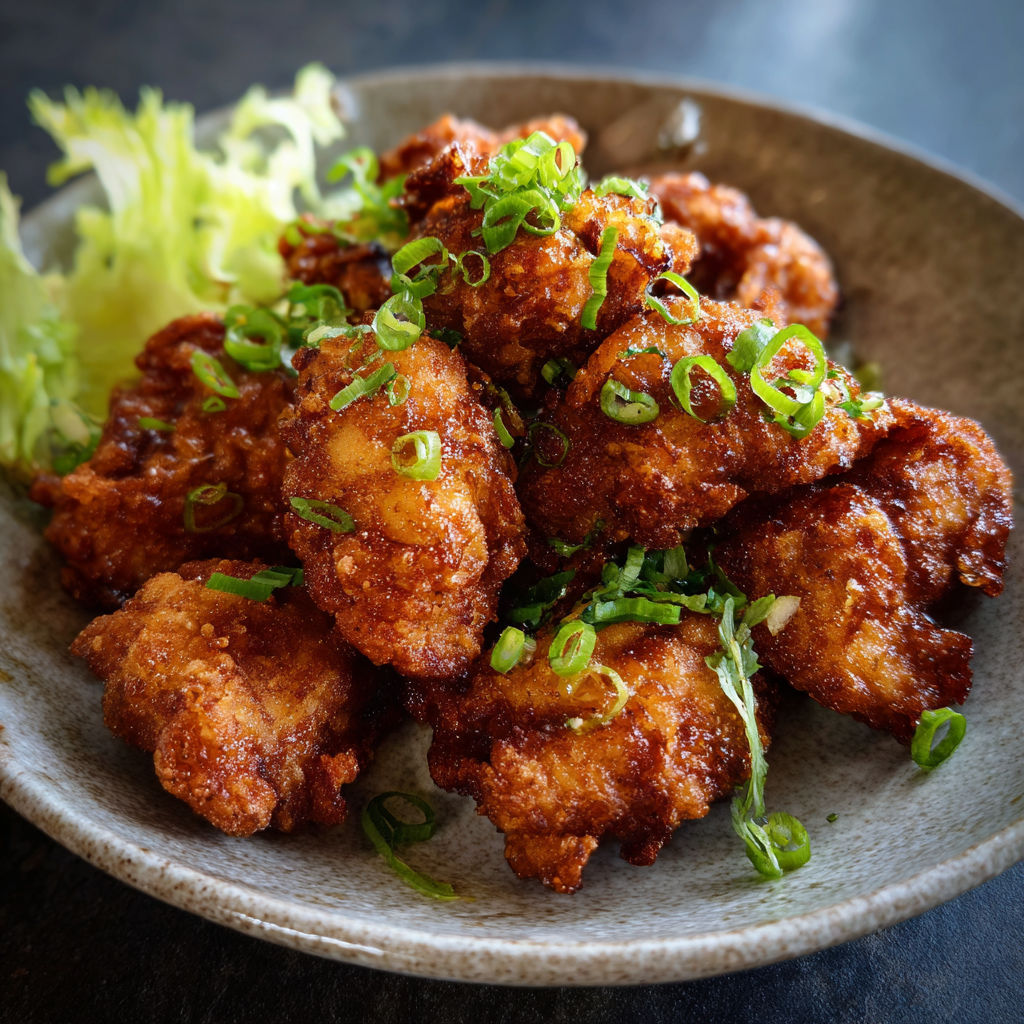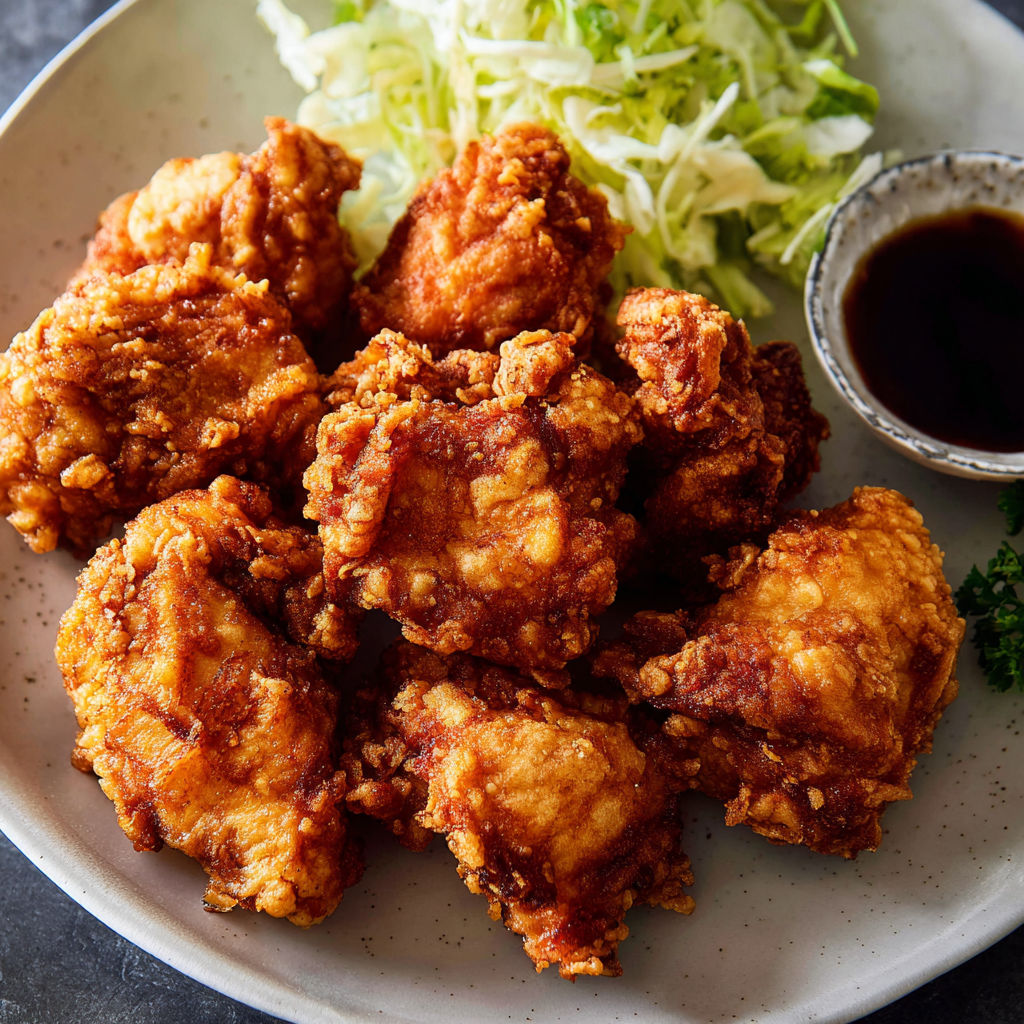 Save
Save
Juicy on the inside and shatteringly crisp on the outside, this Japanese fried chicken brings izakaya flair straight to your kitchen. The double frying method ensures every bite is intensely satisfying with an aroma so inviting that leftovers rarely last. Perfect with rice or as a party snack, this recipe lets you master karaage in your own home.
Every time I serve this at gatherings, friends always ask for the recipe. My son calls it his favorite treat after school and loves helping toss the chicken in starch.
Ingredients
- Chicken thigh fillets: deliver maximum juiciness and flavor. Look for ones with good marbling and no excess fat for ideal results.
- Soy sauce: brings umami depth and salt. Choose a naturally brewed bottle for best taste.
- Cooking sake: tenderizes the meat. Japanese sake is ideal but you can use dry sherry in a pinch.
- Mirin: adds sweetness and a mellow background note. Use authentic hon mirin if possible for proper balance.
- Fresh ginger: gives fragrance and zing. Always grate just before using and include the juice for full effect.
- Cornflour or cornstarch: creates that signature light and crispy shell. Make sure it is super-fine and lump free.
- Vegetable oil: with a high smoke point is best for frying. Sunflower or canola both work well.
- Shredded lettuce or cabbage: for serving adds fresh crunch and color if you like a bit of salad with your fried chicken.
Instructions
- Prepare the Marinade:
- Mix the chicken pieces with soy sauce, sake, mirin, and freshly grated ginger in a mixing bowl or zip-top bag. Toss thoroughly so every piece is coated and let it sit in the refrigerator for half an hour or up to an hour to absorb the flavors.
- Coat the Chicken:
- Remove the chicken from the marinade and gently dry each piece with kitchen paper so the coating will stick. Dredge each piece evenly in cornflour, ensuring all parts are covered in a fine layer. This step is key for achieving the right crunch.
- First Fry at Lower Temperature:
- Heat the oil in a deep pot to around 160 to 165 degrees Celsius. Fry the chicken in small batches for about three to four minutes. You want the outside to set but not take on color yet. Allow the pieces to rest after this to set the coating.
- Second Fry for Crispiness:
- Increase the oil temperature to about 190 to 200 degrees Celsius. Fry the chicken again in batches for only a minute or two until you get that deeply golden and crispy exterior. Move quickly so everything stays super crisp.
- Drain and Serve:
- Place the cooked chicken on paper towels to drain any excess oil. Serve it hot with a side of shredded cabbage or lettuce and maybe a little parsley for an extra fresh kick.

My favorite part is that first bite after the second fry. The ginger scent practically floats off the plate and always brings back memories of snacking at Tokyo train station stalls with my sister.
Storage and Leftover Tips
Store any leftovers in a sealed container in the refrigerator for up to two days. To bring the crisp back reheat in a hot oven or air fryer rather than microwaving. You can freeze the fried chicken after the first fry and finish the second fry straight from the freezer.
Easy Ingredient Swaps
Swap chicken thigh for breast if you want a leaner bite but watch carefully in the fryer because white meat cooks faster and can dry out. Sherry works if you do not have sake and a touch more sugar can stand in for mirin. Toss with chili powder or black pepper to give it a little extra heat right before frying.
Perfect Ways to Serve This
Pile onto a platter with lemon wedges and serve as an appetizer for friends. Pack inside a bento box over rice for the ultimate on-the-go lunch. Serve family style with steamed rice and pickled vegetables for a true weeknight feast.

No two batches ever come out exactly the same and that is part of the fun. The spice and warmth of the ginger really make it stand apart from regular fried chicken. Give this recipe a try and you will see why it disappears so quickly at any table.
Recipe Q&A
- → Why marinate the chicken before frying?
Marinating infuses the chicken with deeper flavor, tenderizes the meat, and helps retain juiciness after frying.
- → What is the benefit of double frying?
The initial low-temperature fry cooks the chicken gently, while the second, hotter fry creates an extra crispy exterior.
- → Can I use chicken breast instead of thigh fillets?
Thigh fillets are preferred for juiciness, but chicken breast can be used for a leaner result, though it may be less moist.
- → What oil is recommended for frying?
Neutral oils like vegetable, canola, or sunflower are best, providing a high smoke point without affecting taste.
- → How should I serve this chicken?
Serve hot, garnished with shredded lettuce, cabbage, or parsley for a refreshing balance to the savory fried chicken.
- → How can I ensure the chicken stays crispy?
Drain excess oil well and serve immediately after frying for optimal crunch and texture.
